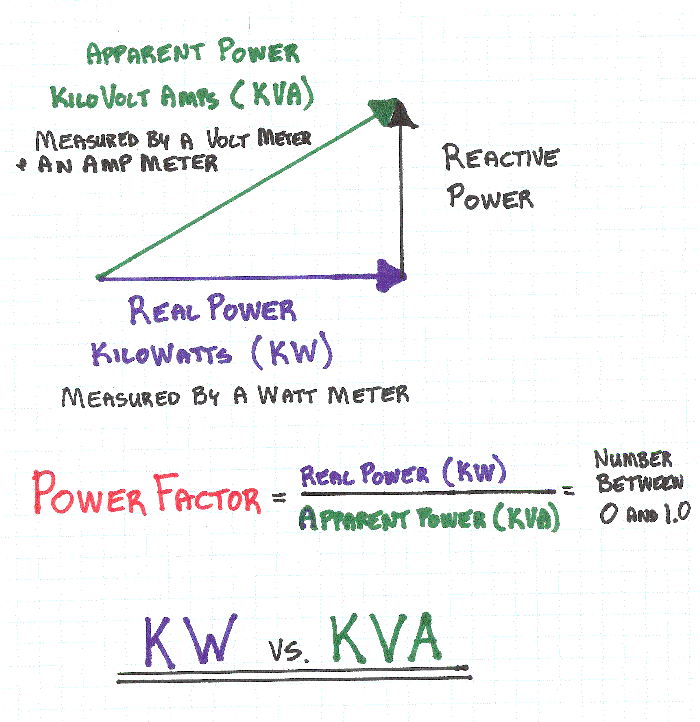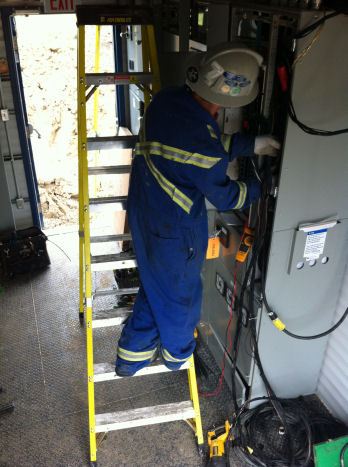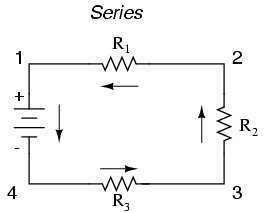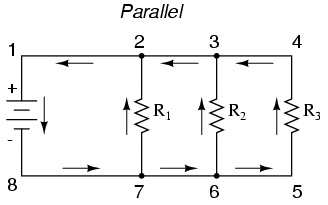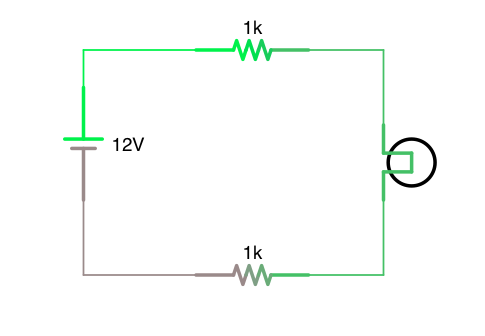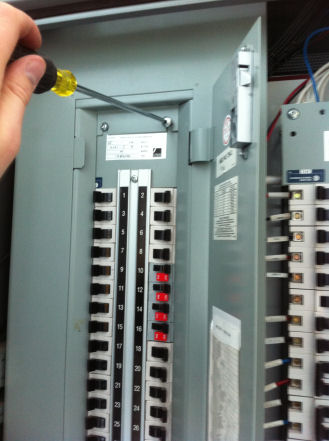All home electrical systems require some type of protective device to guard against excessive current; the two most common ones are the fuse and circuit breaker. Fuses are mostly found in older structures that have not been updated. The predominant device found in modern homes is the circuit breaker.
When a current flows through any substance, including wires, it generates heat. The larger the current that flows in the wire, the more heat generated. Electrical current flowing in a wire also creates a magnetic field around that conductor. This field of magnetism increases as current increases. These two basic physical principles are the key design components of the modern circuit breaker. They can be used separately, or in combination, to achieve specific circuit requirements.
The circuit breaker is actually an automatic switch. The basic operating interface between the breaker device and the homeowner is the switch-like handle on the front. This handle can actually be used as a manual switch if necessary. This handle typically has four positions: off, on, tripped and reset. The on and off positions are usually marked in some way. The tripped position can be indicated in several ways. The two most common are a red mark showing somewhere on the face of the breaker, or the handle will move halfway between the on and off positions. The reset position usually involves moving the handle in the off direction until a click is heard. At that point the breaker can again be turned back to the on position.
A word of caution is advised before you try to reset a breaker and turn it back on. Since it is designed as a protective device and has just performed its duty admirably, it is obvious that something went wrong somewhere along the circuit from the panel box outward through the structure. It is imperative that the problem is found and corrected before the breaker is again turned on. Usually this will involve turning some appliance off or unplugging it altogether. If the fault is not corrected the circuit breaker will again trip until needed repairs or appropriate action is taken.
As I mentioned earlier a circuit breaker is similar to a switch, like the one in the hall of your home. Many of the basic components found in wall switches are also integral parts of the breaker. The toggle handle plus some combination of levers, springs and contacts is common to both. The typical breaker will also add either a bimetallic sensor to detect the rise in heat or a coil of wire to create a magnetic field, and perhaps both.
The bimetallic sensor is a strip composed of two different metals sandwiched together; the two metals selected expand at different rates. When a current is flowing through the strip a small amount of heat is produced. As the current increases so does the heat. Since the two metals are mechanically bonded together, they expand, but at different rates. This difference in expansion causes the strip to bend. The strip is attached to a series of levers and latches. The action involved is much like a mechanical lock. When the strip moves the lever far enough it unlocks the spring loaded handle which then moves toward the off position opening the electrical contacts and stopping the current.
Since current flowing through the metal strip requires a short but specific delay to heat the metal, it can be designed to allow for small overloads of fairly short duration. This is an advantage for circuits that have motors on them, which typically will draw a large current for a very brief period of time as they come up to speed. Commonly breakers of 30 amps or less are designed this way.
The magnetic sensor in a circuit breaker is composed of a wound coil of wire and a metal plate or rod placed within the coil's magnetic field. This plate or rod is connected to the latching mechanism in a similar manner as the bimetallic strip. This combination of coil and plate or rod is engineered so that under normal current loads the force of the magnetic field is insufficient to move the lever and unlock the handle.
As current increases past a pre-designed maximum, the force of the coil increases sufficiently to move the rod or plate, operate the lever or latching mechanism thus turning the circuit breaker off. Since a very large and rapid increase in current past the design rating of the breaker is usually associated with a serious problem this method of tripping a breaker adds an extra element of safety.
This action is much faster than the heat method of activation and protects the circuit when larger overloads are sensed; not allowing for a time delay which might cause equipment damage or a fire hazard. Putting both methods of operation together into one circuit breaker combines the positive features of both, yielding added safety.
Circuit breakers are convenient because they have the same current ratings as fuses, but unlike the fuse, they may be reset and used again; no spares are needed. Since you don't need to keep a box of them on hand for emergencies, they have become commonplace in modern electrical branch circuits and as the main cutoff for most panel boxes.
